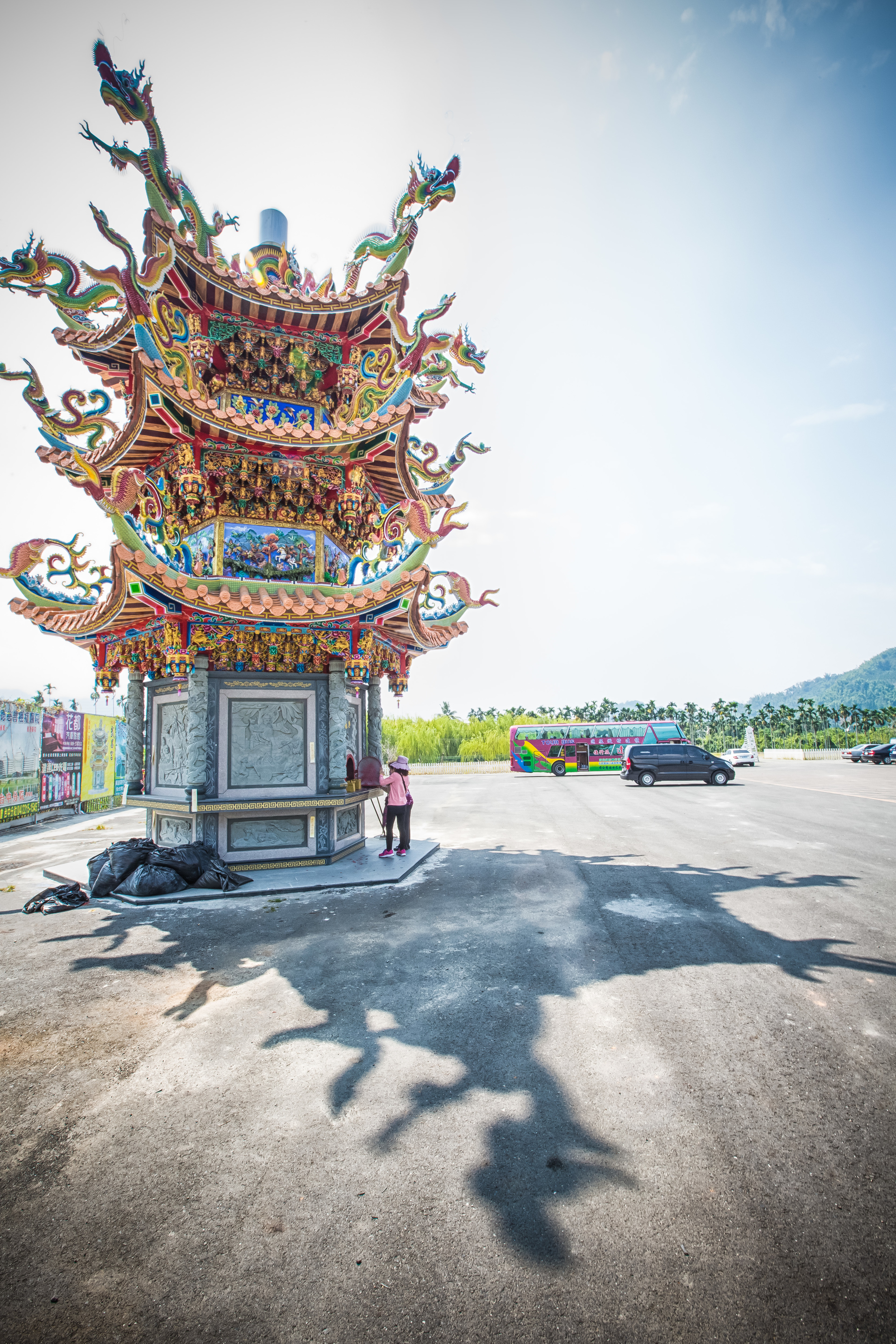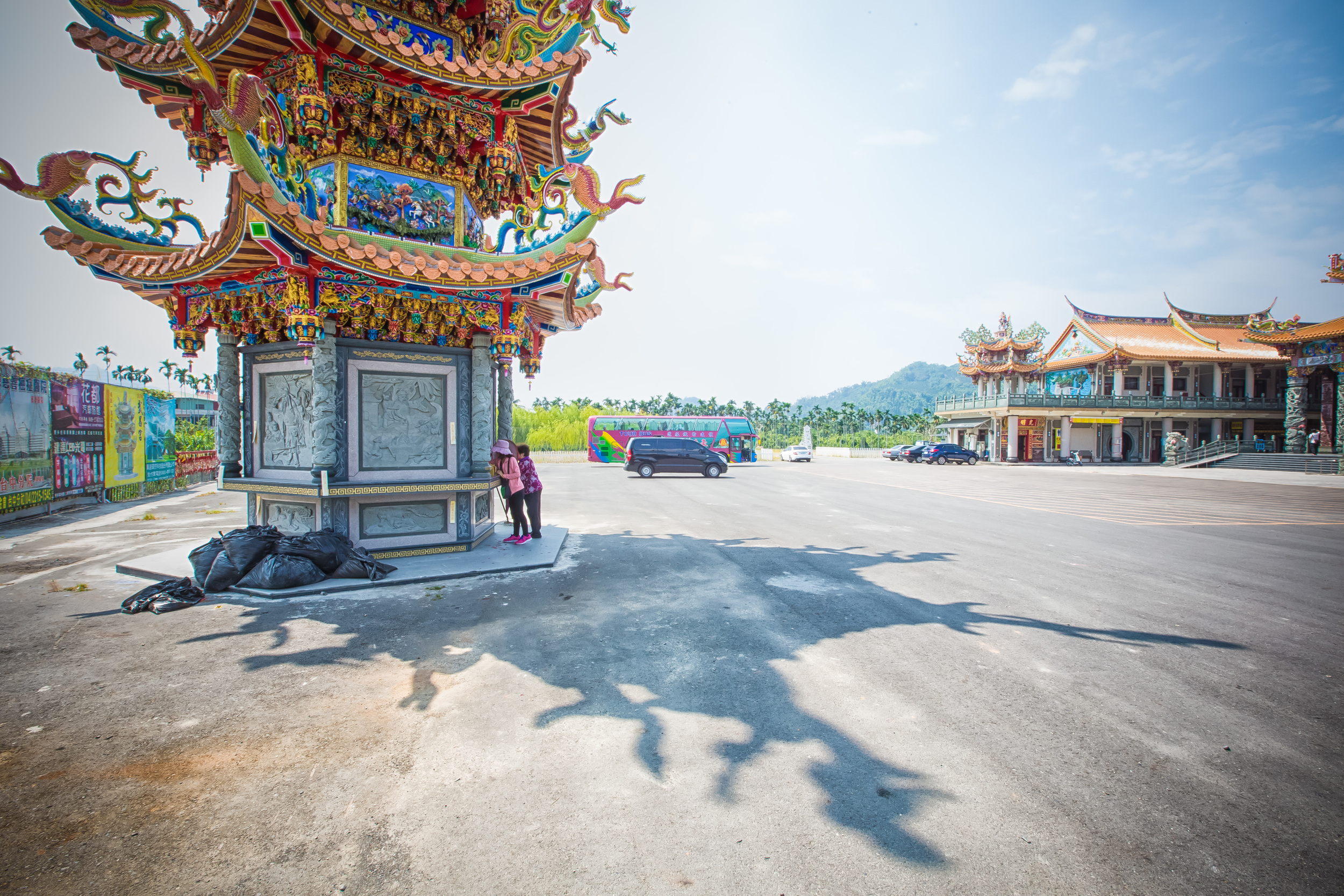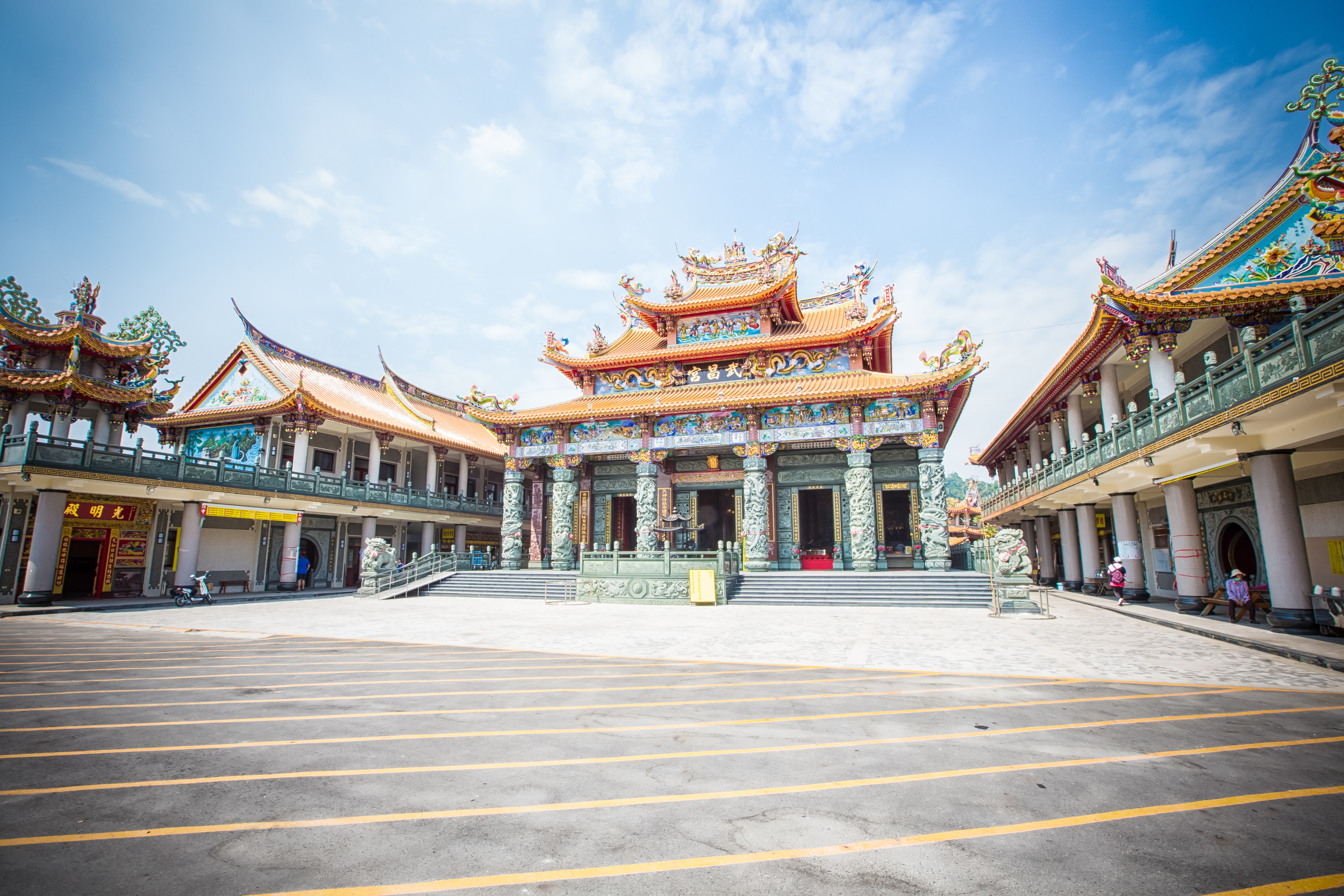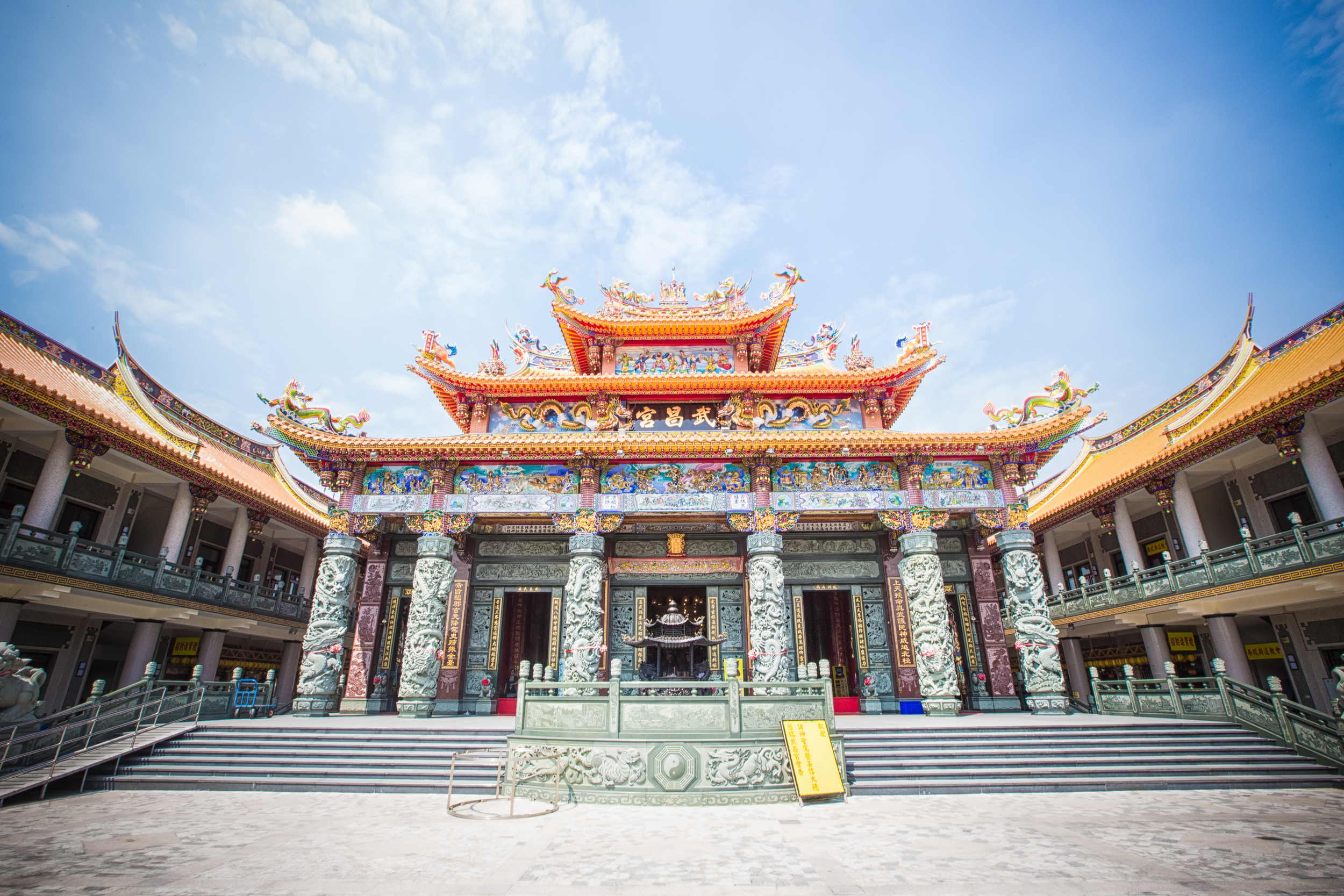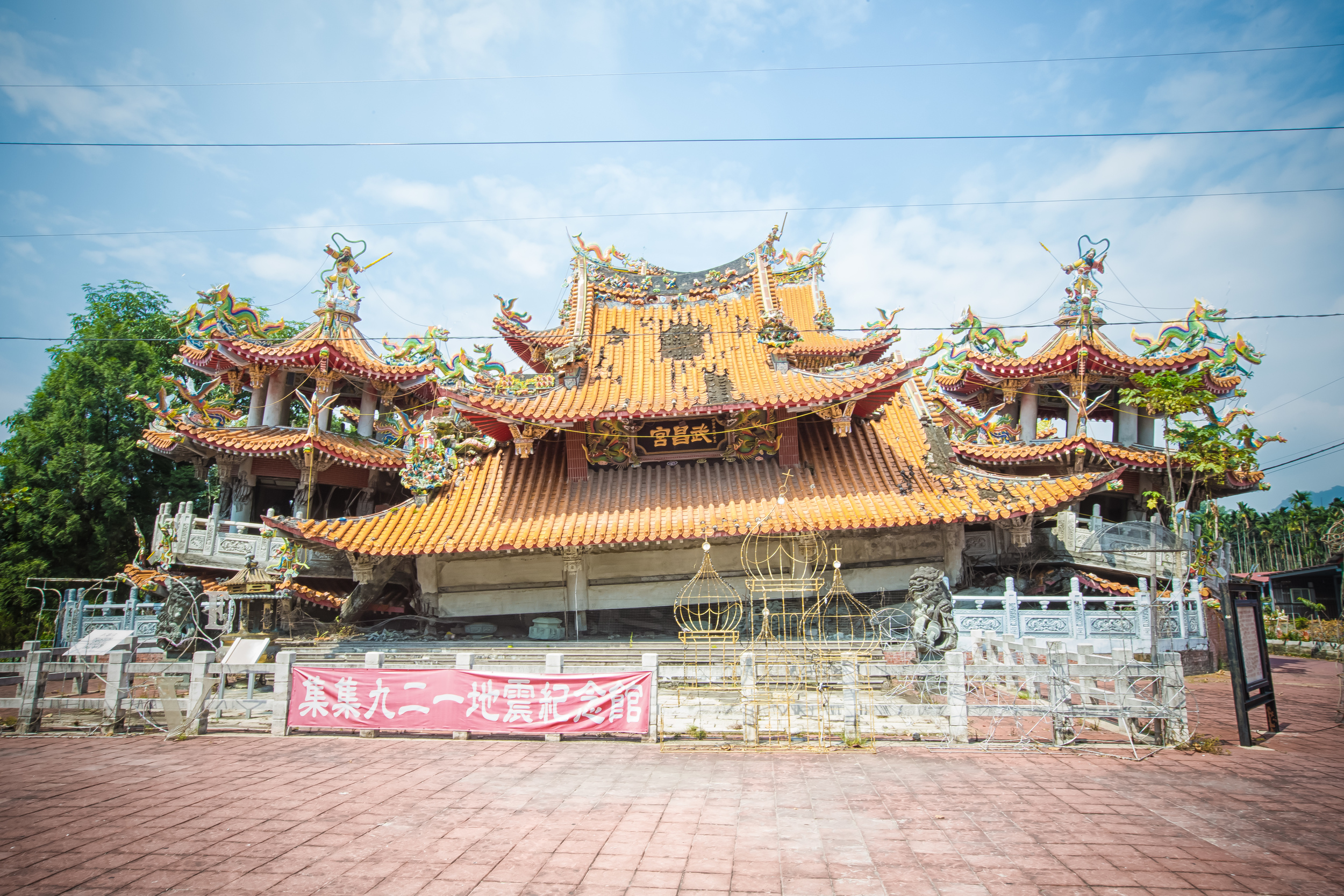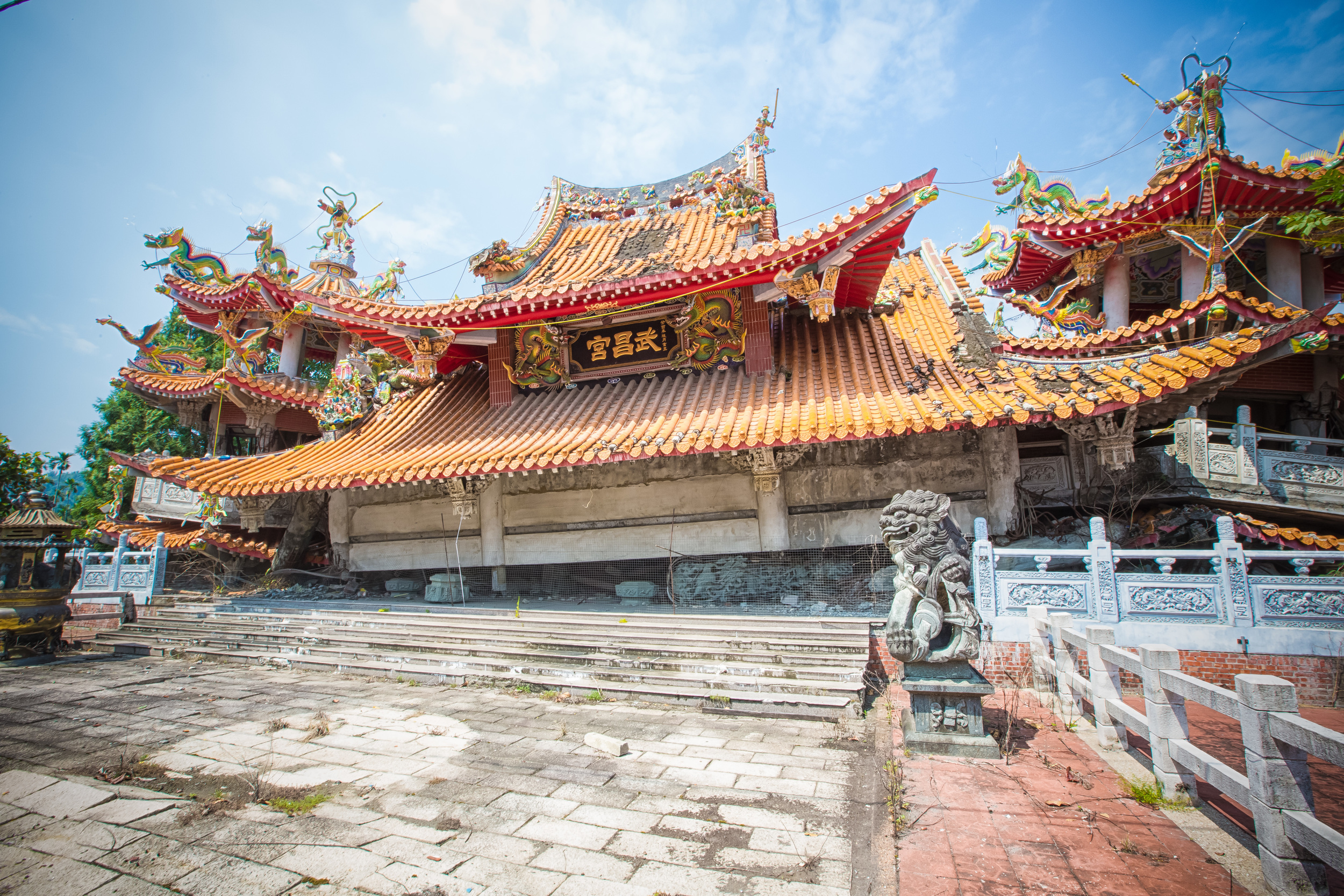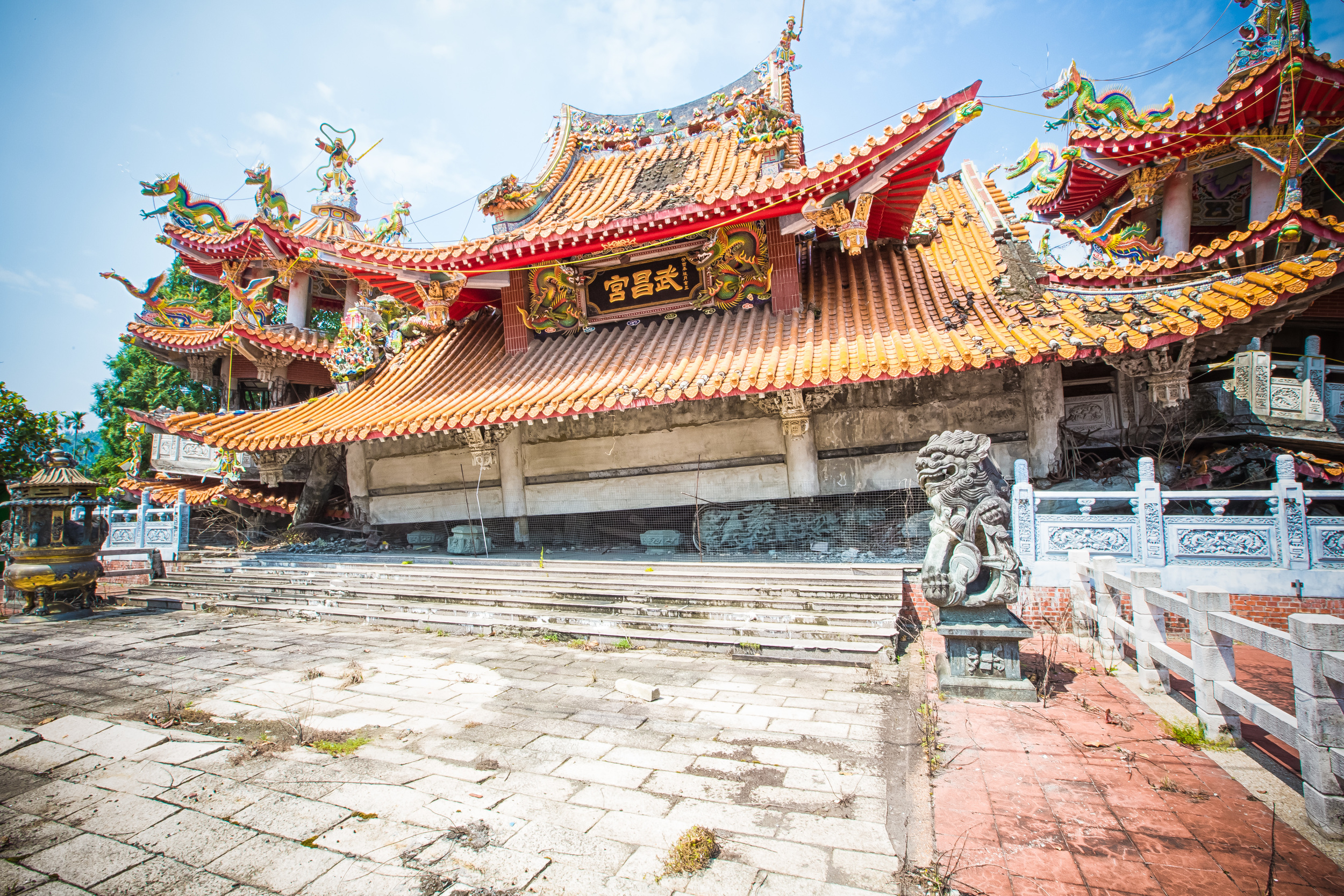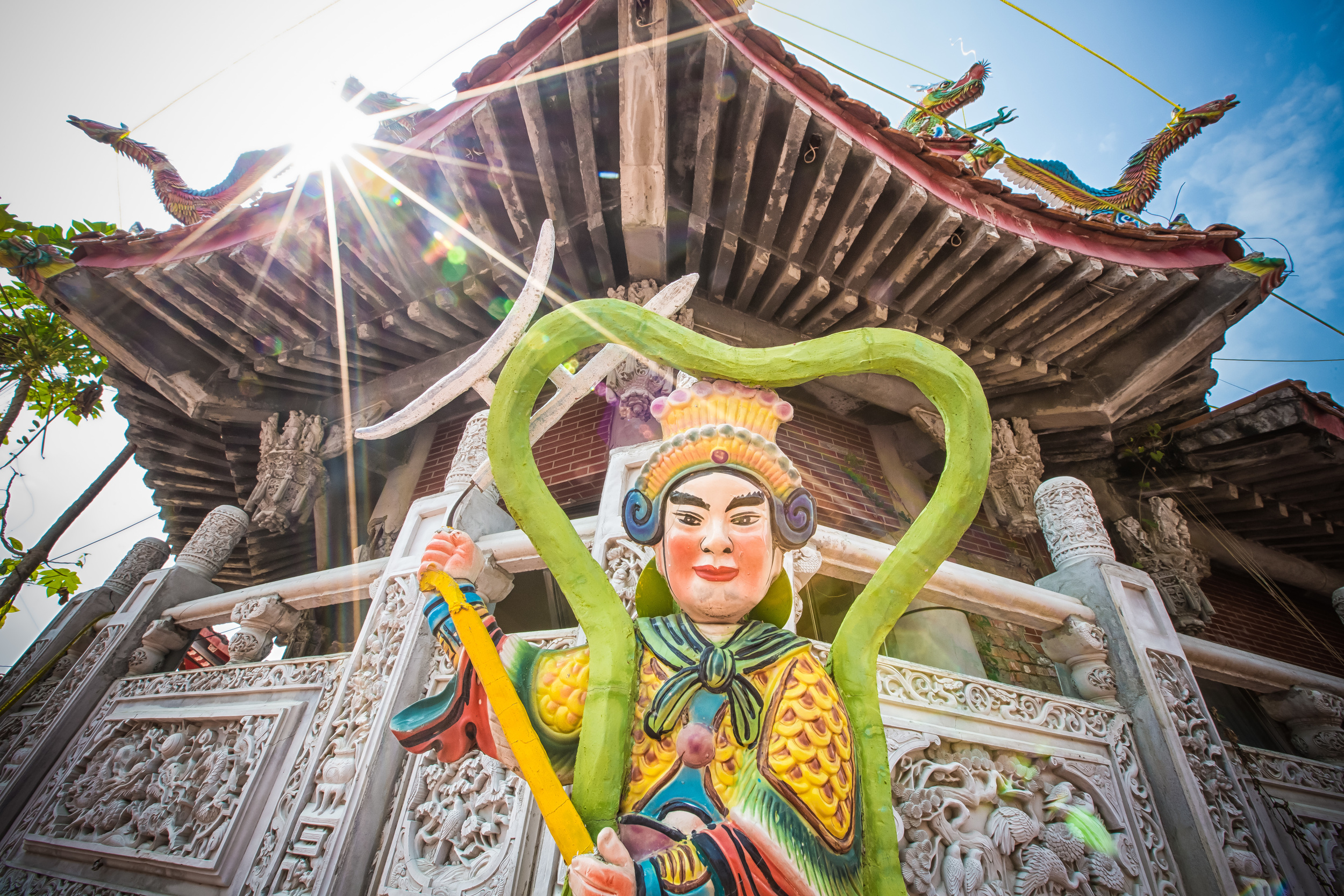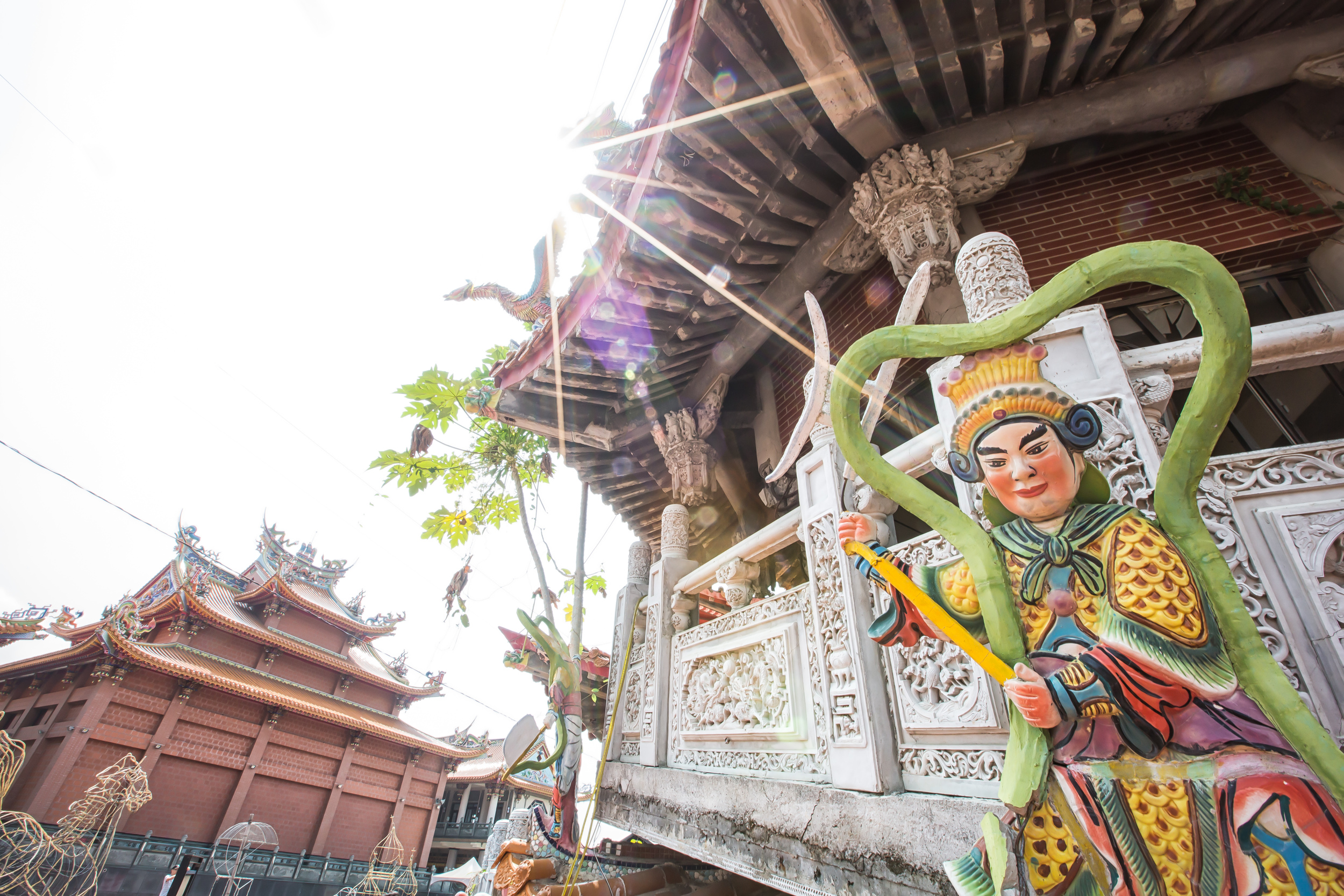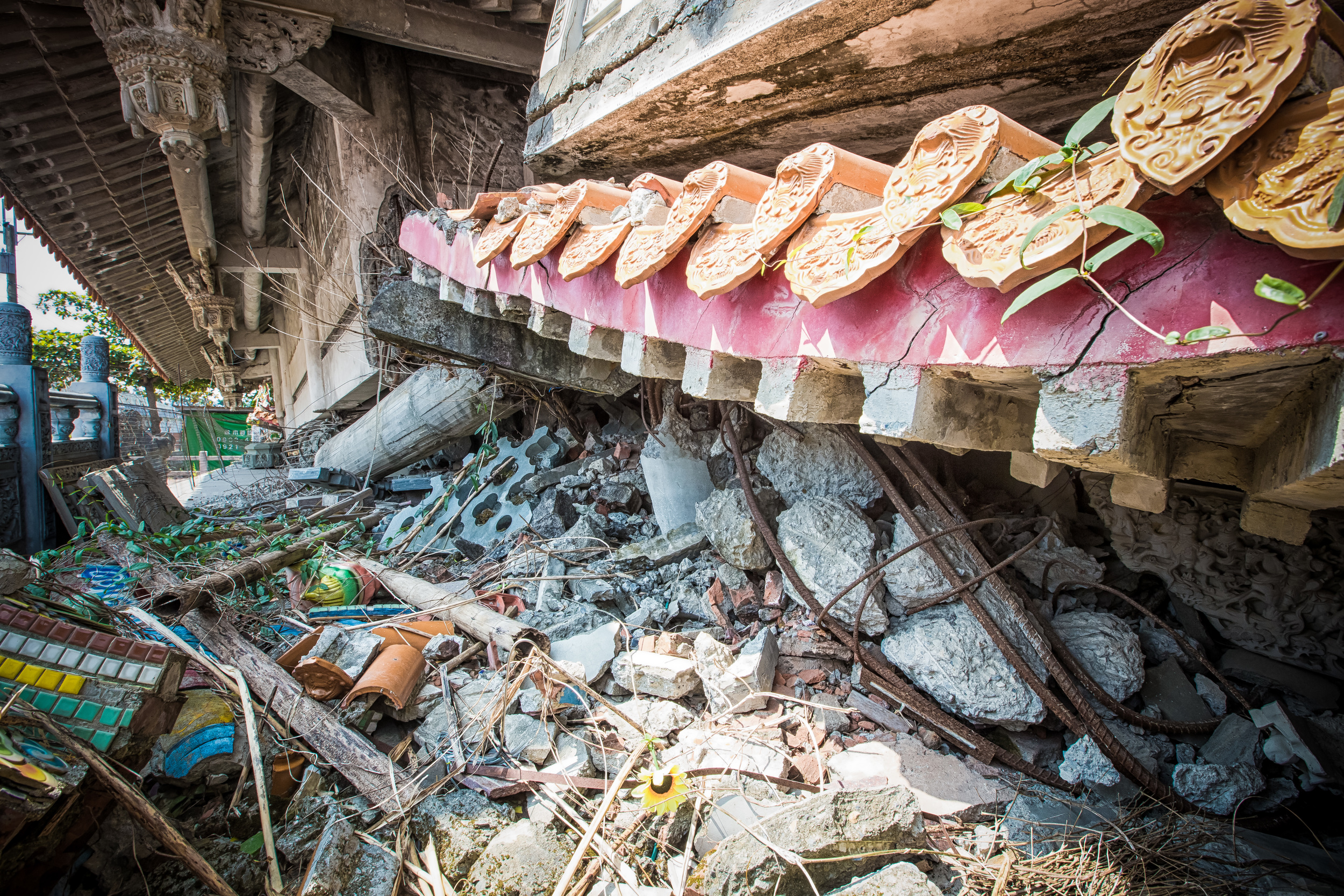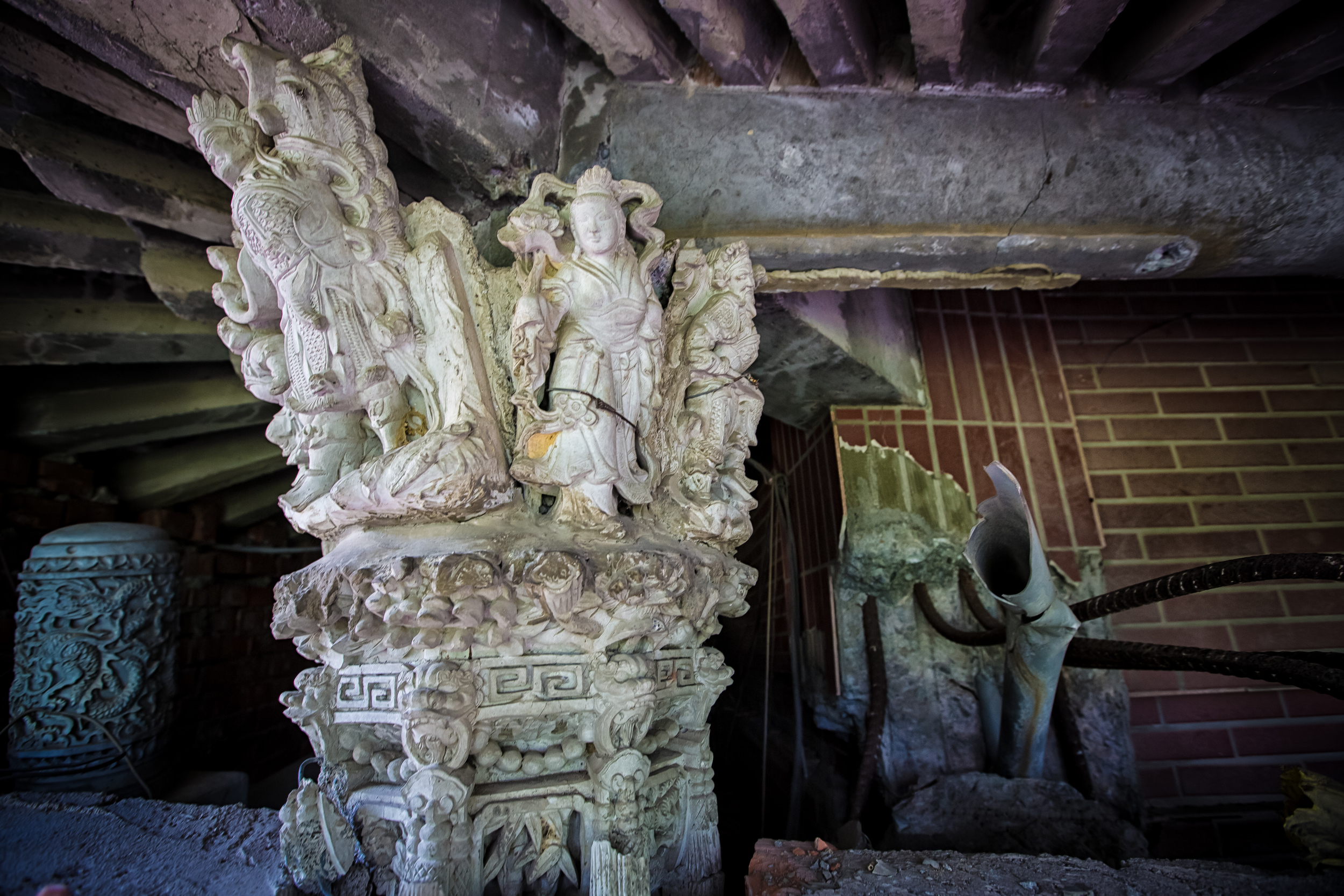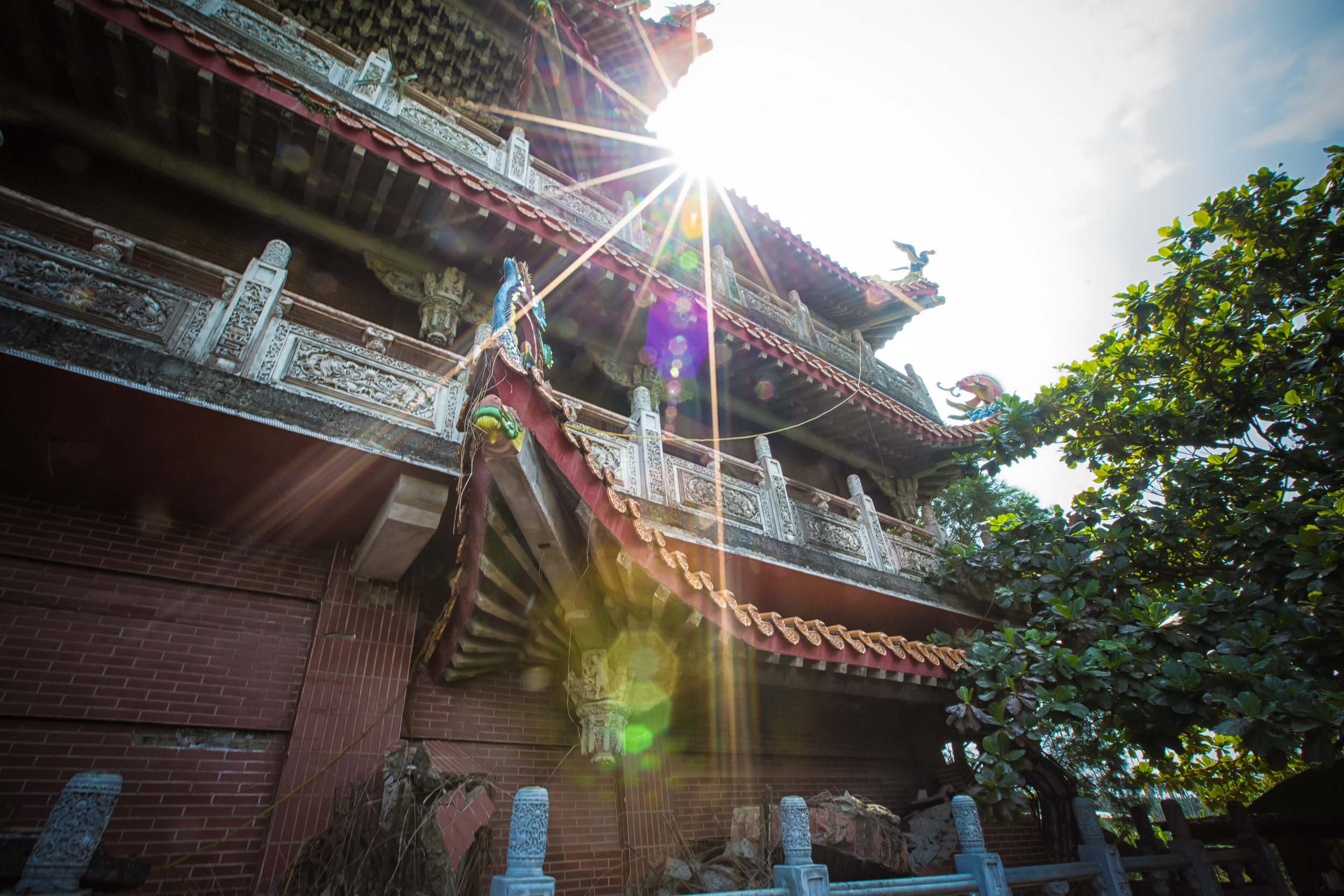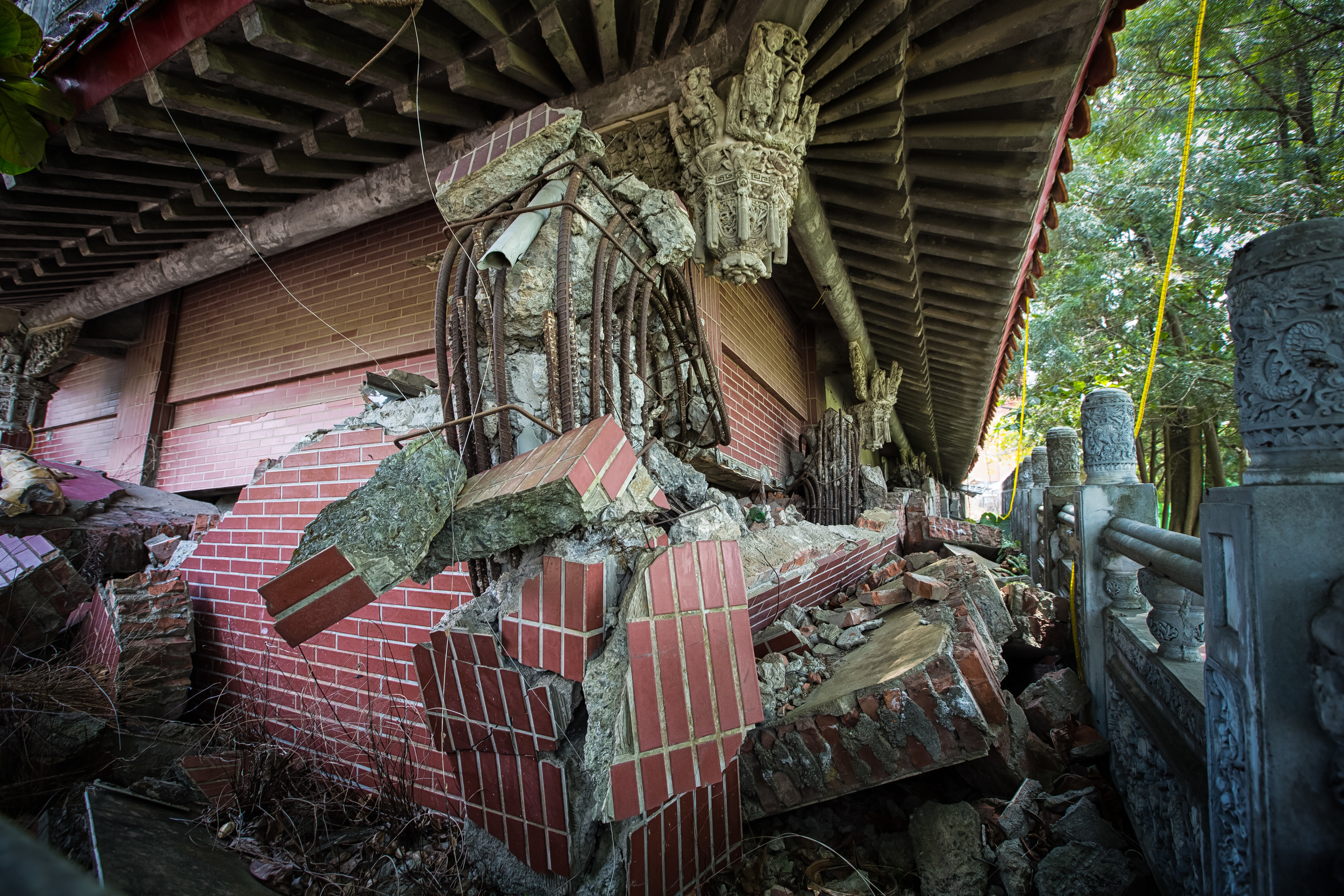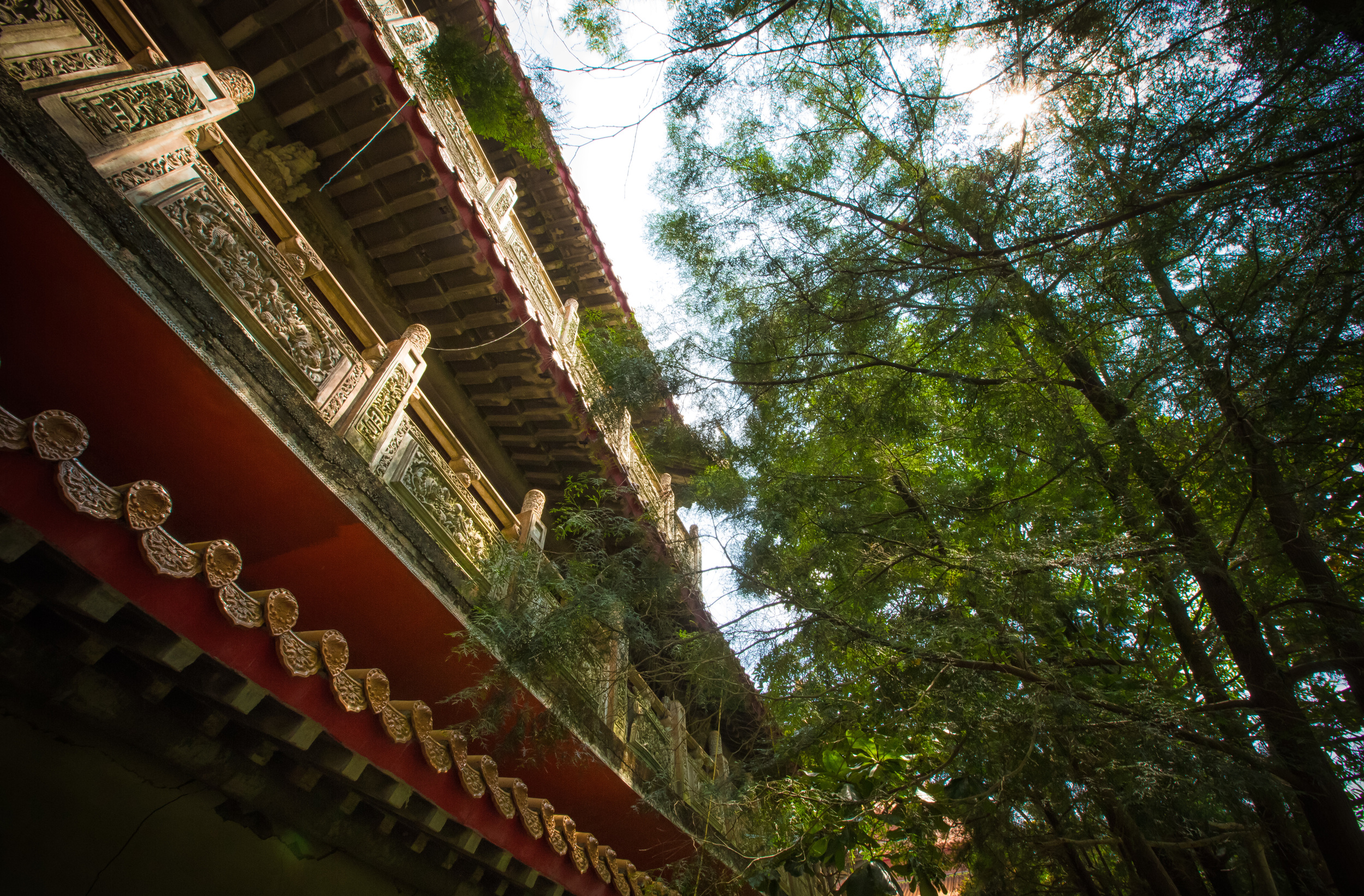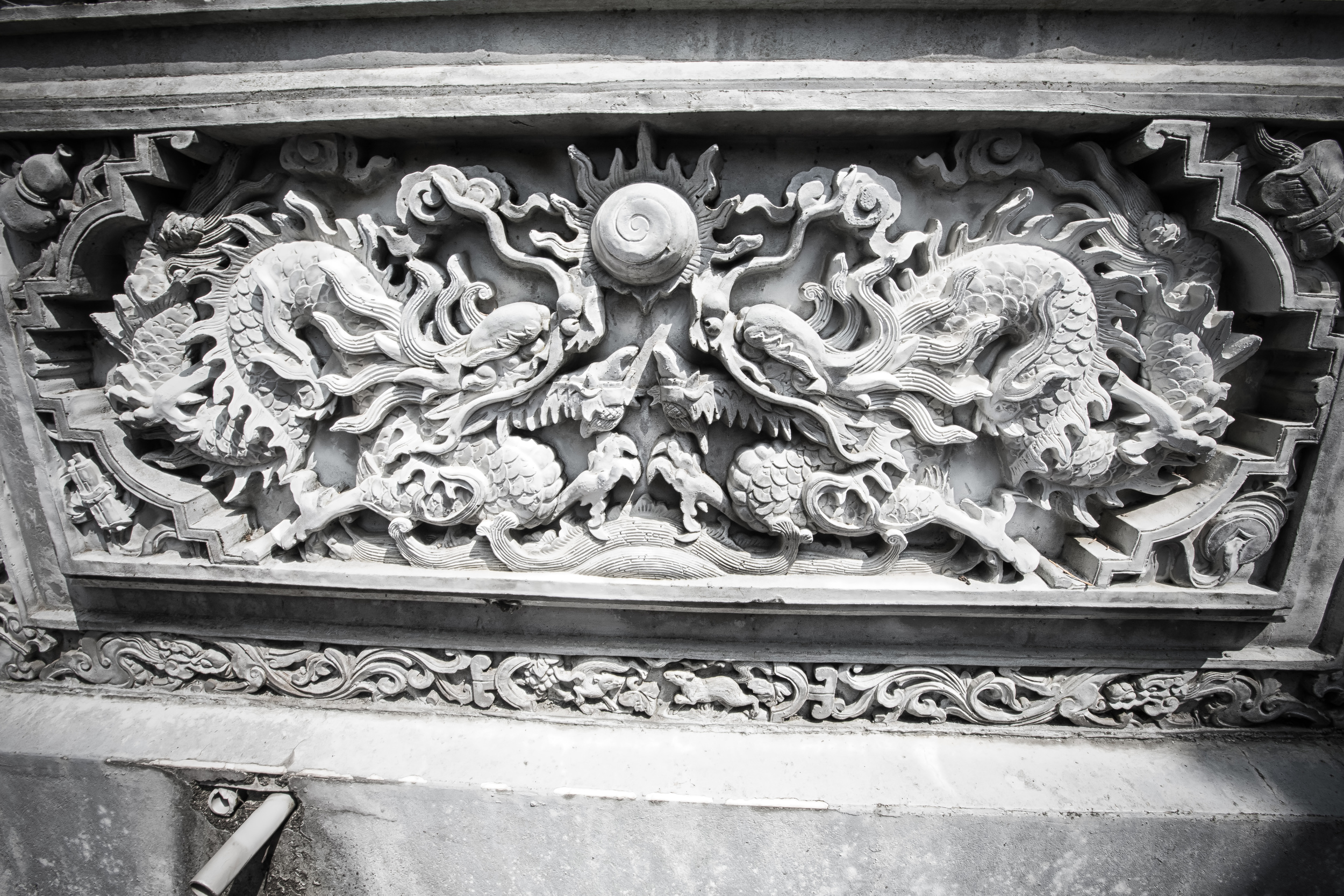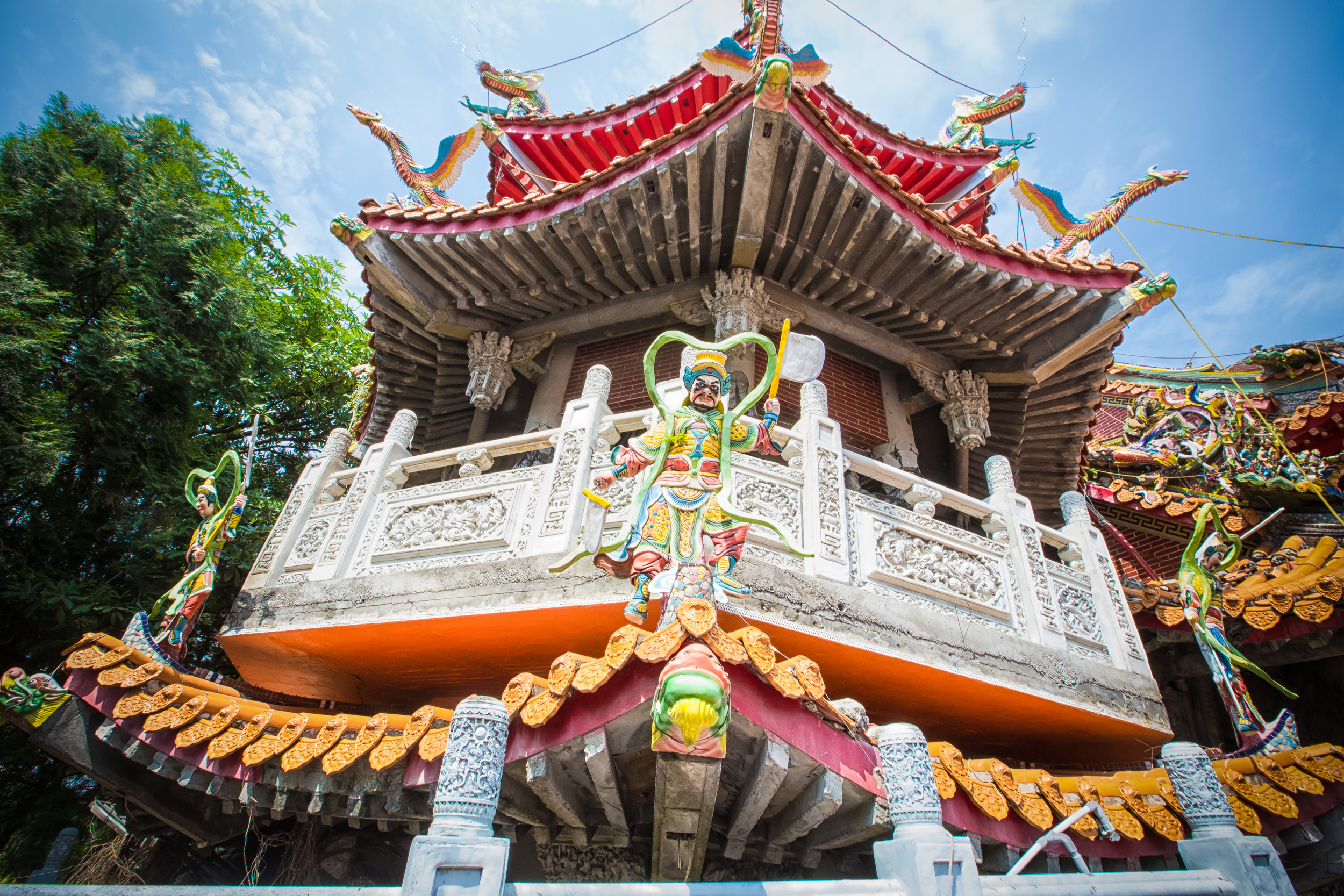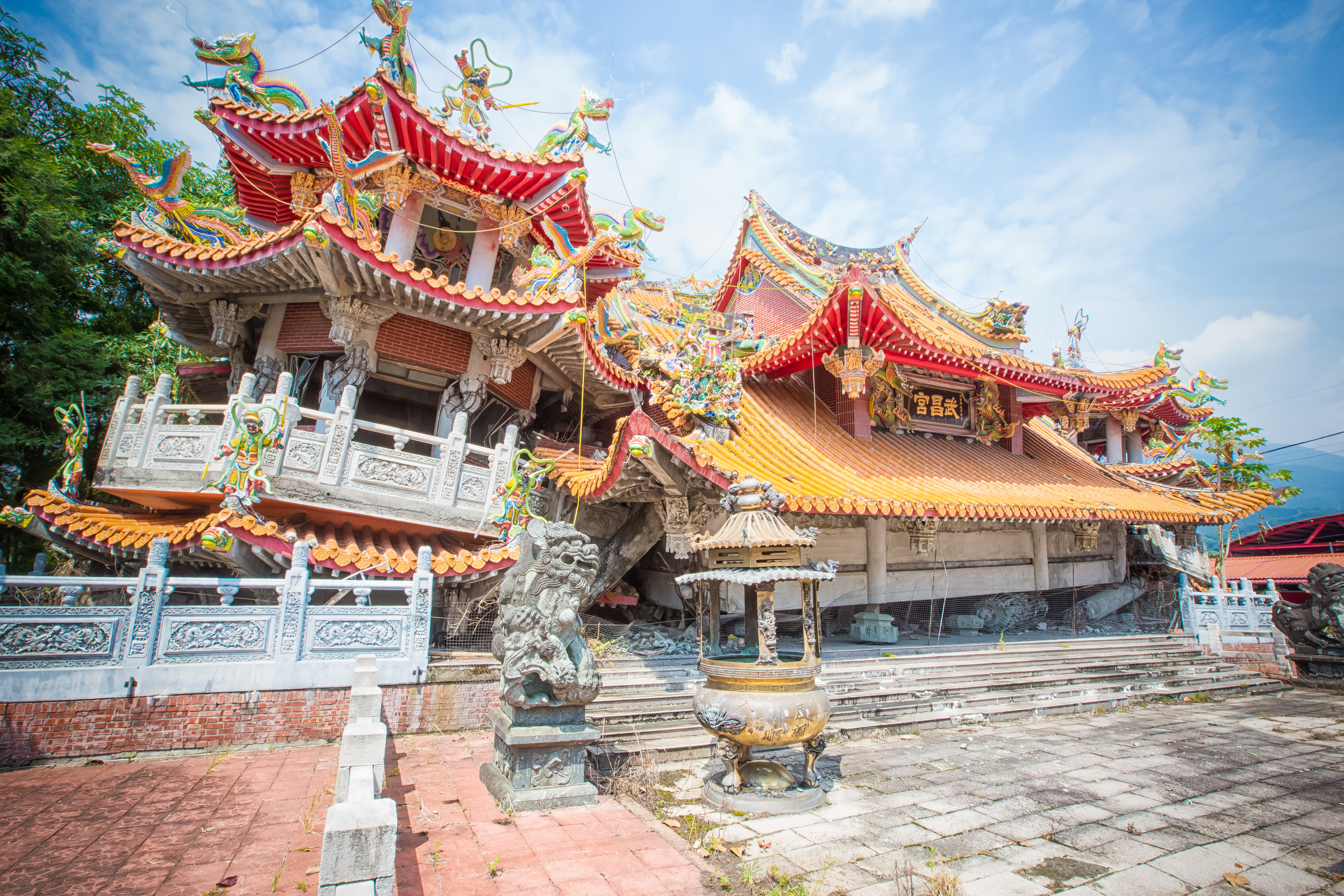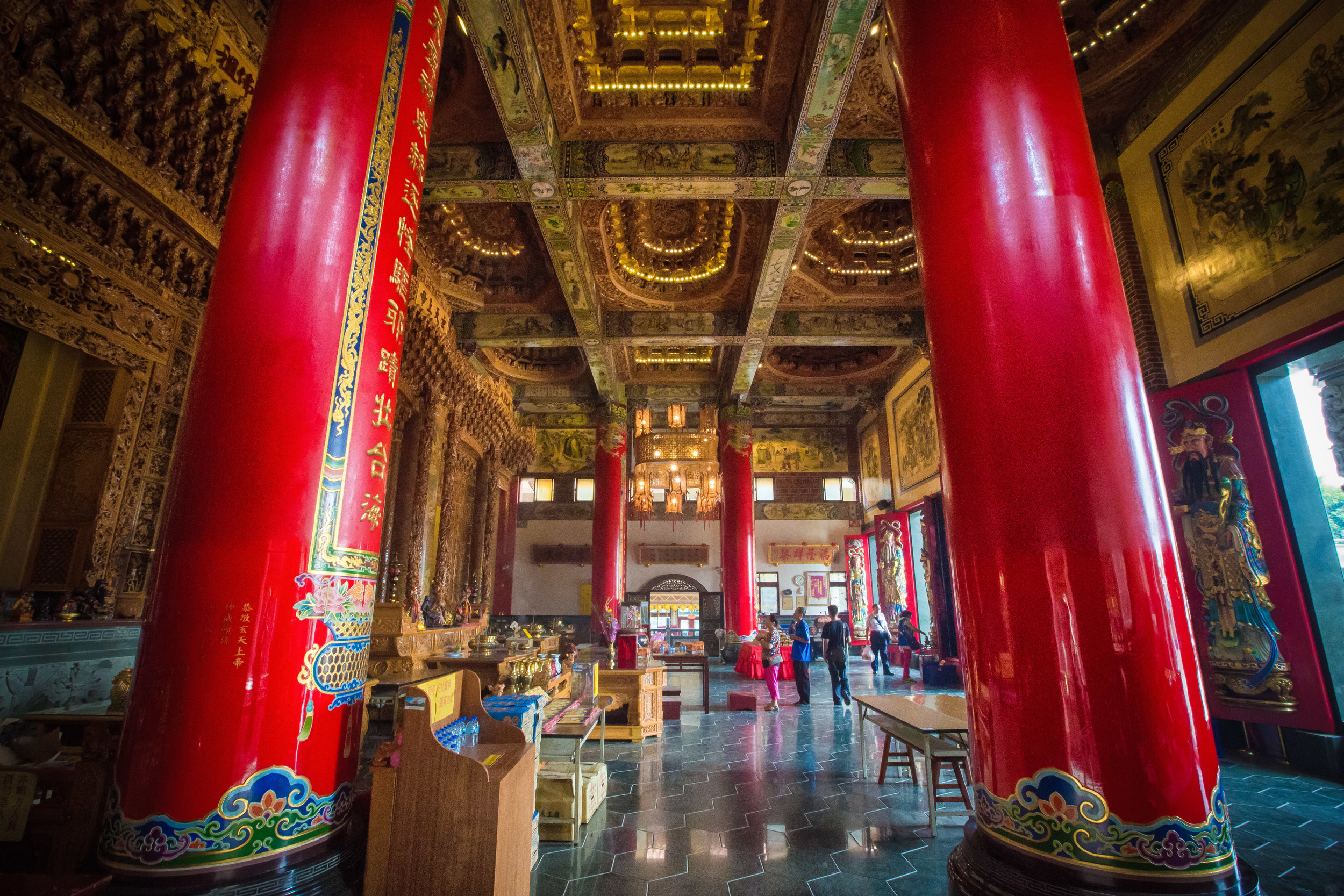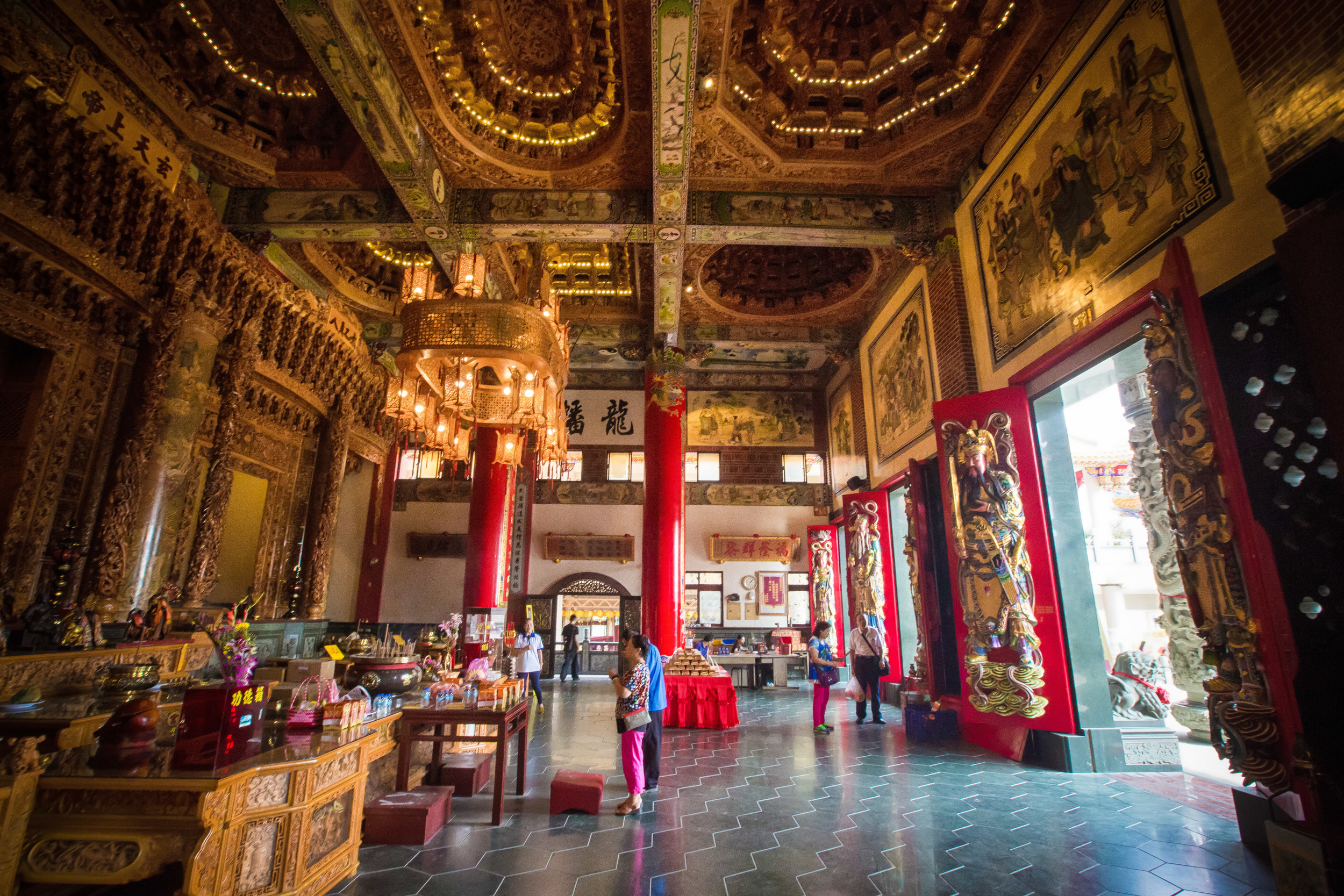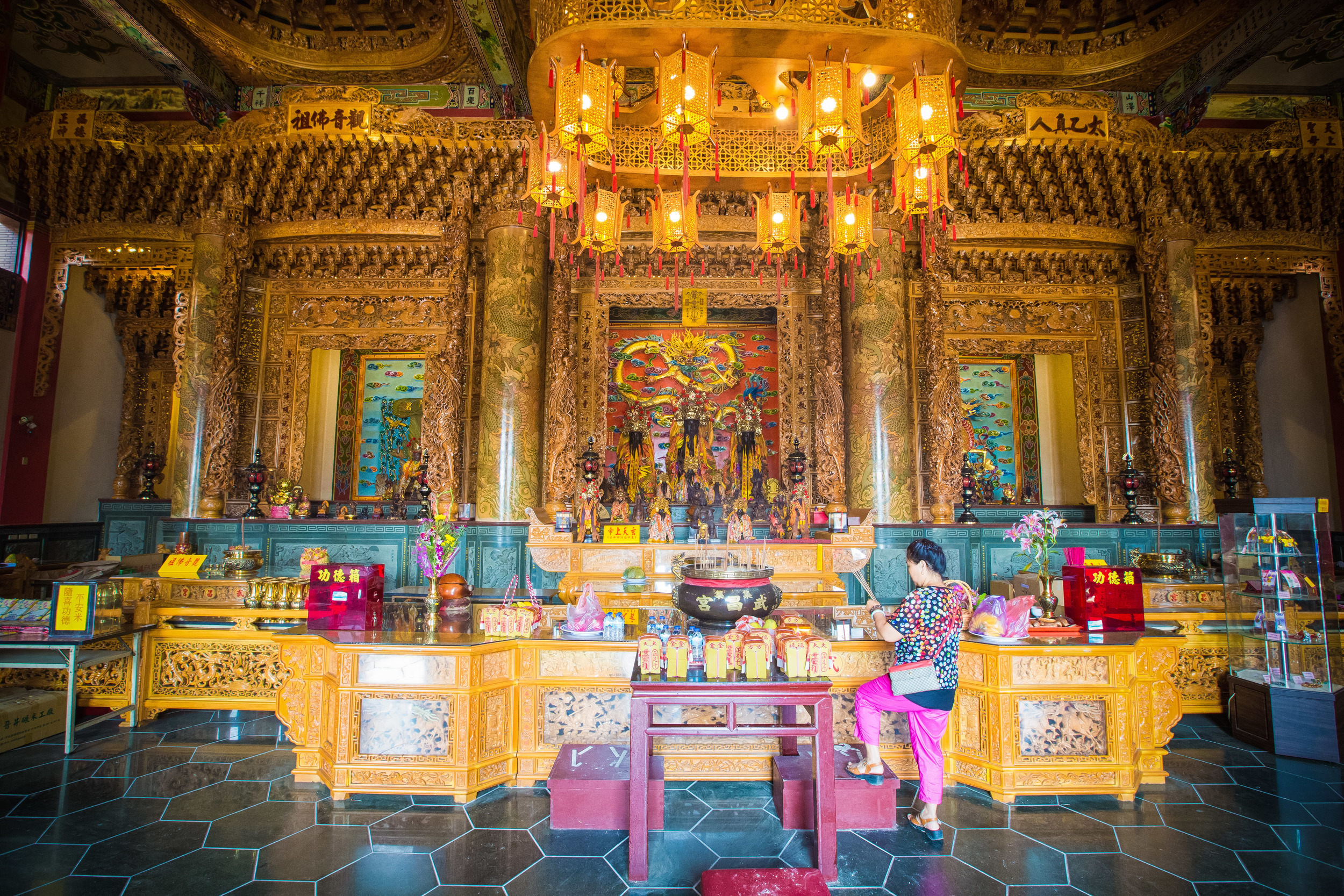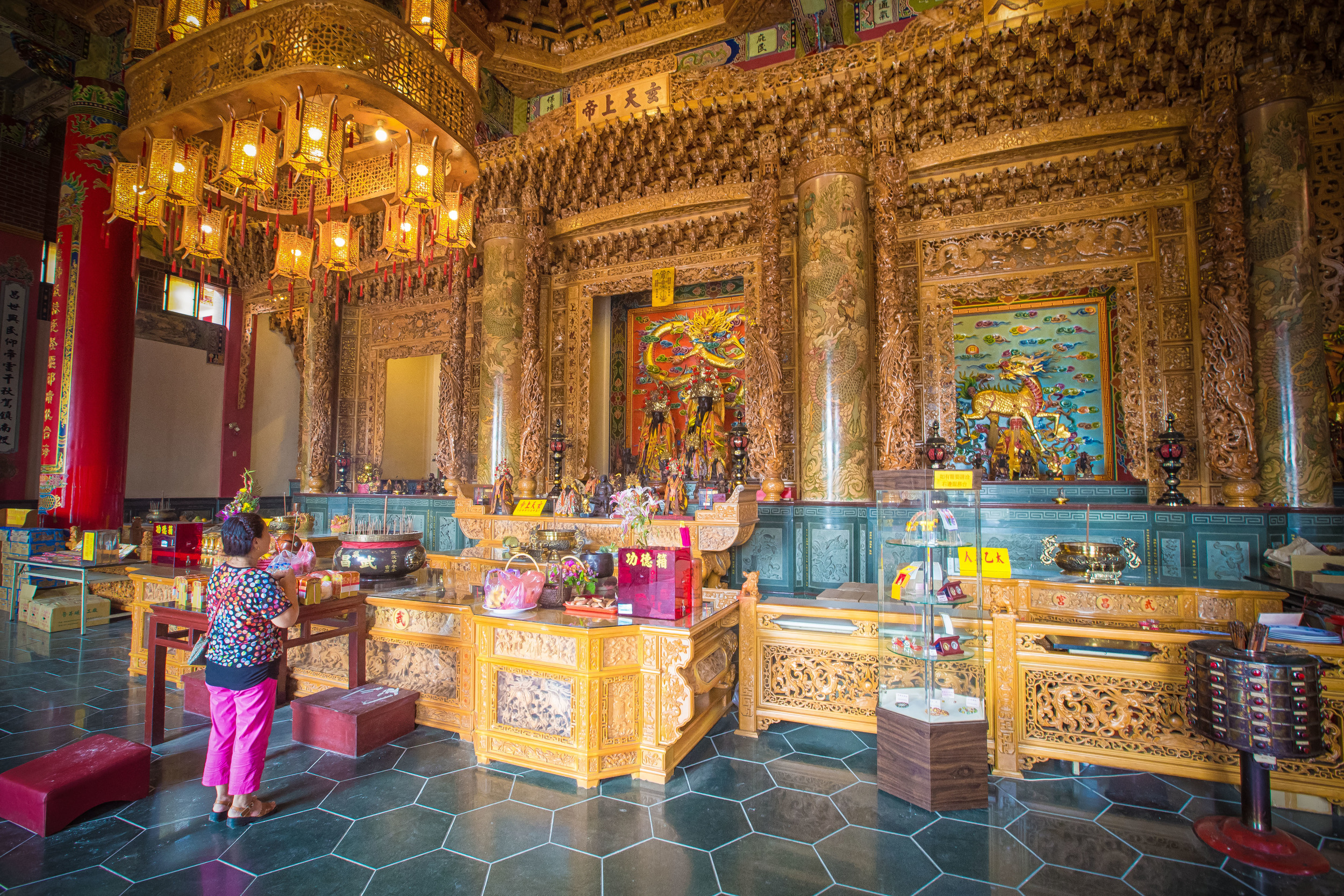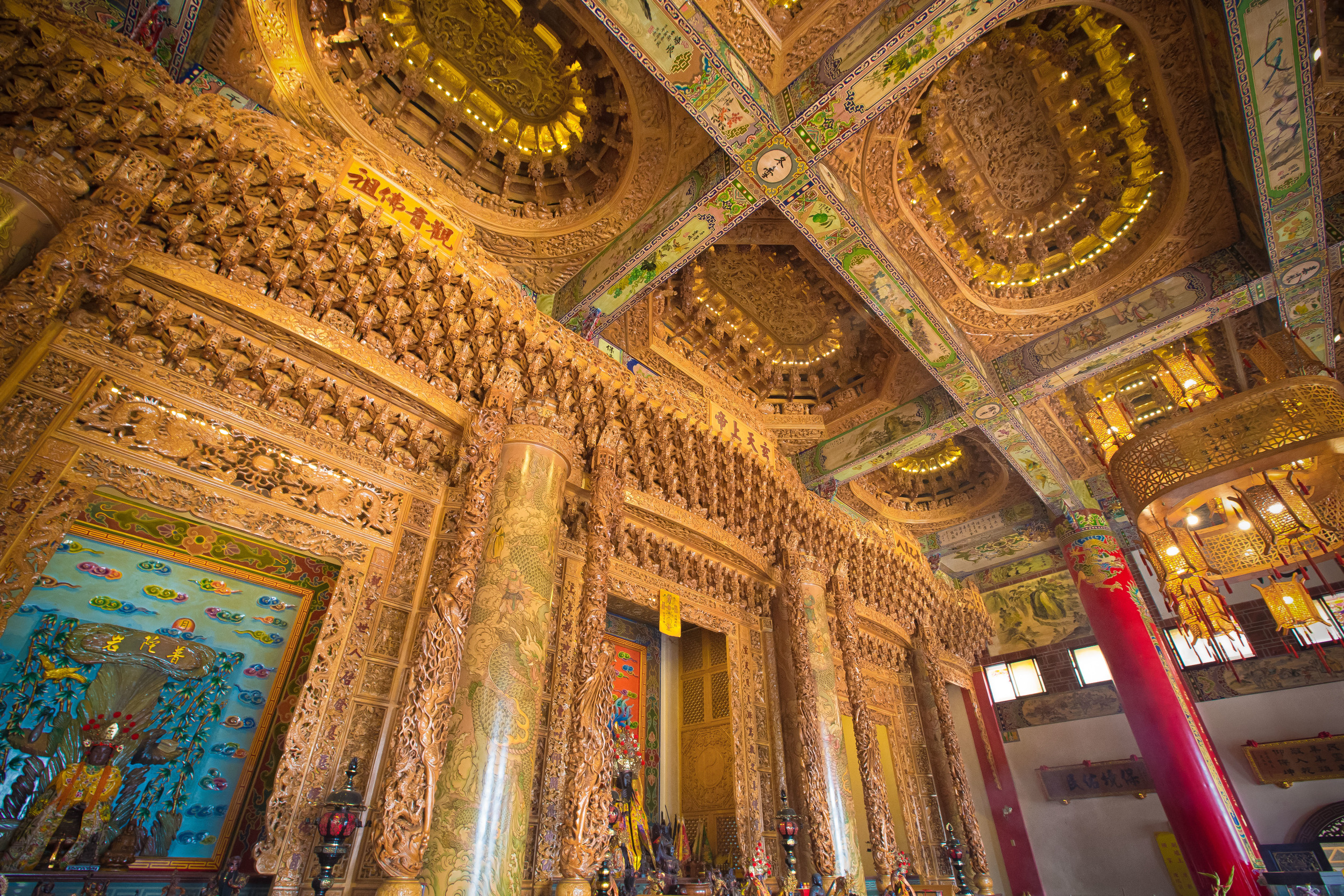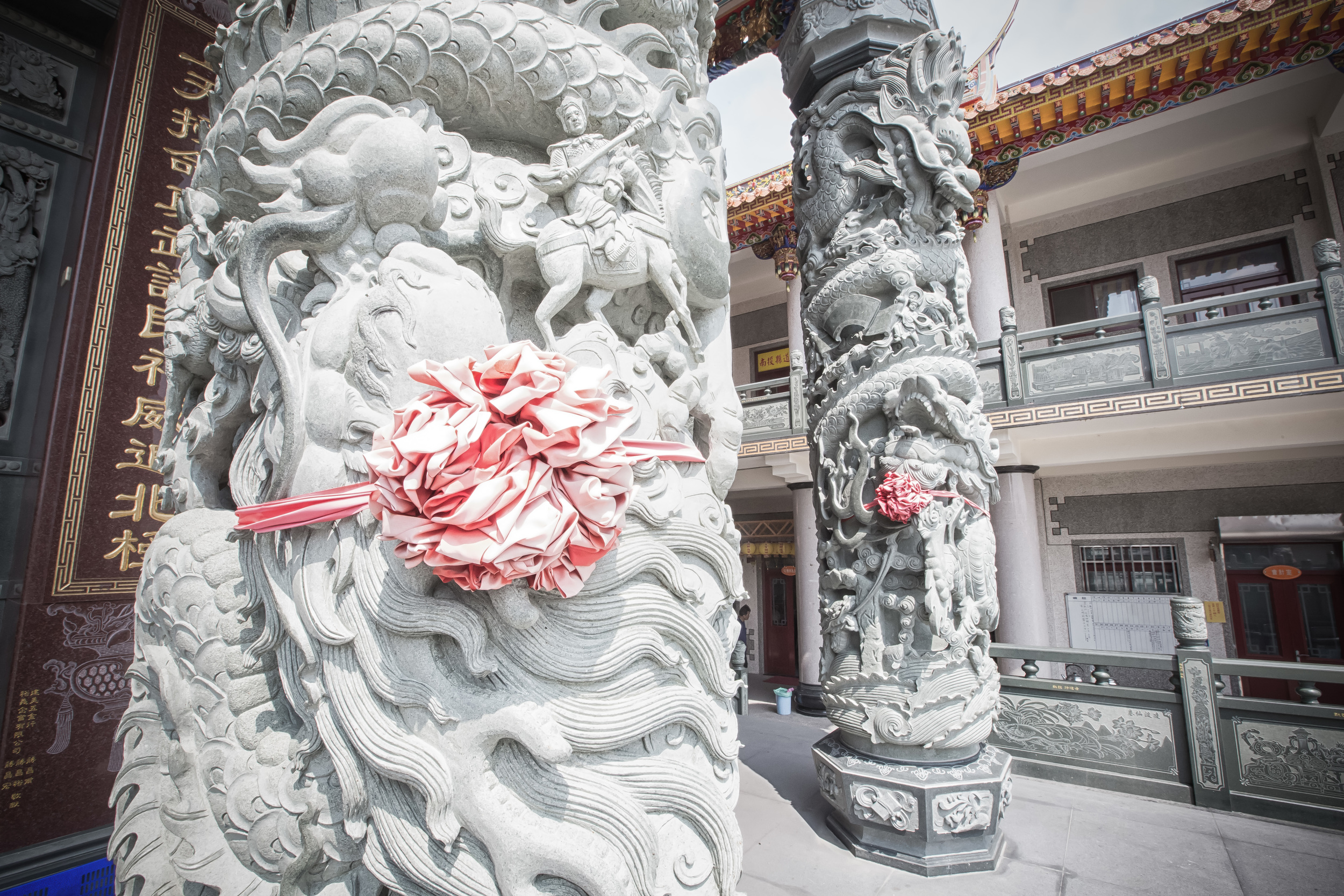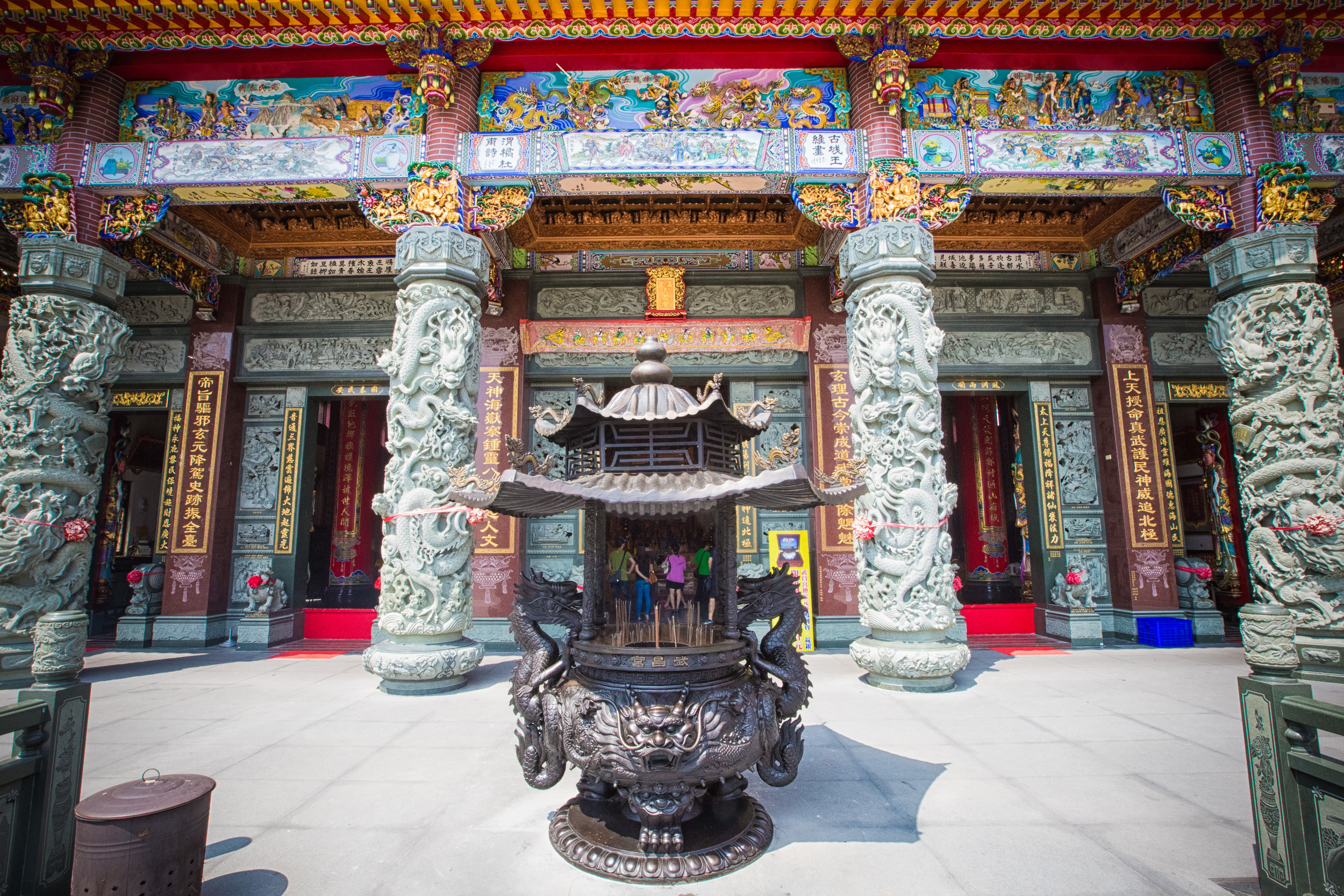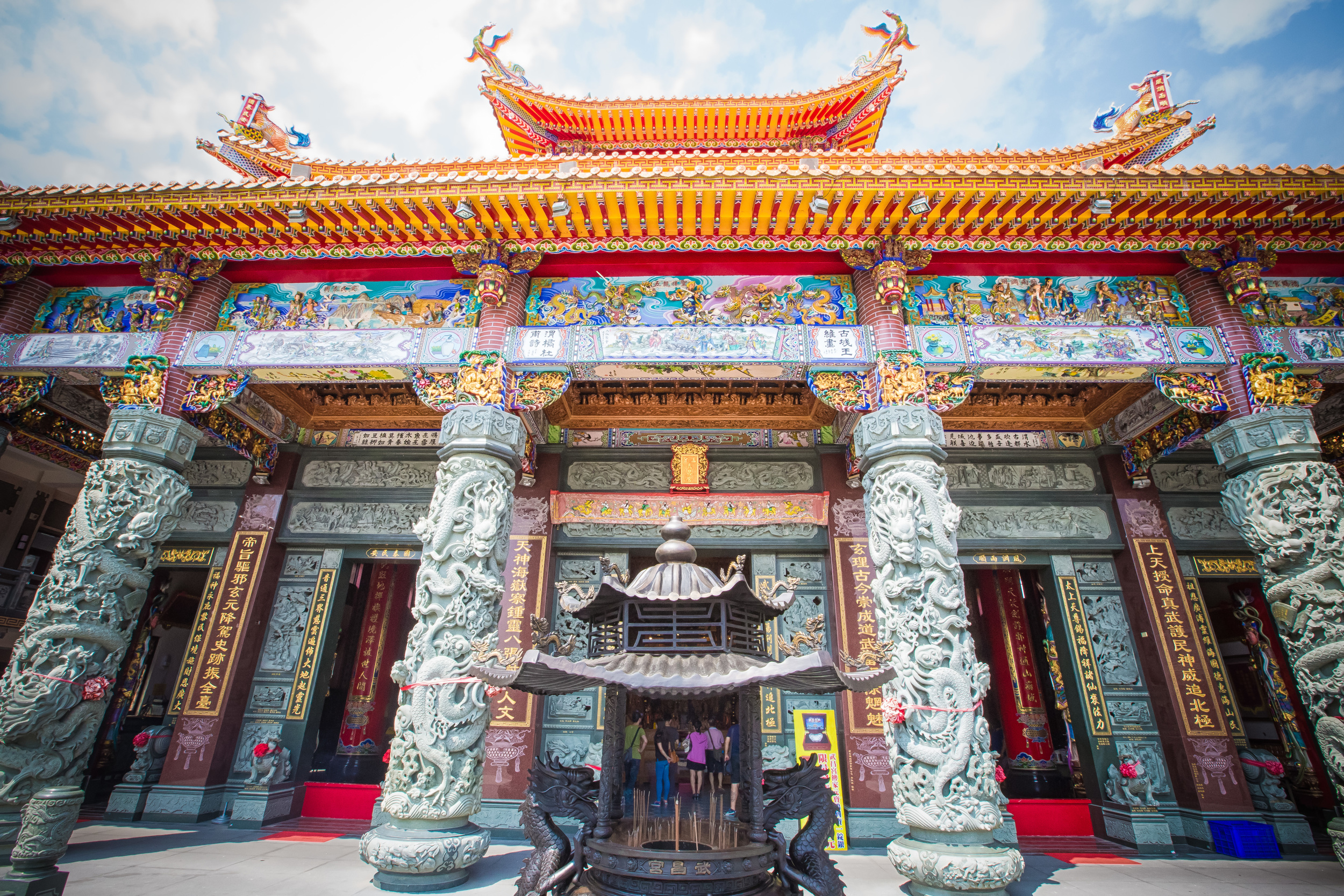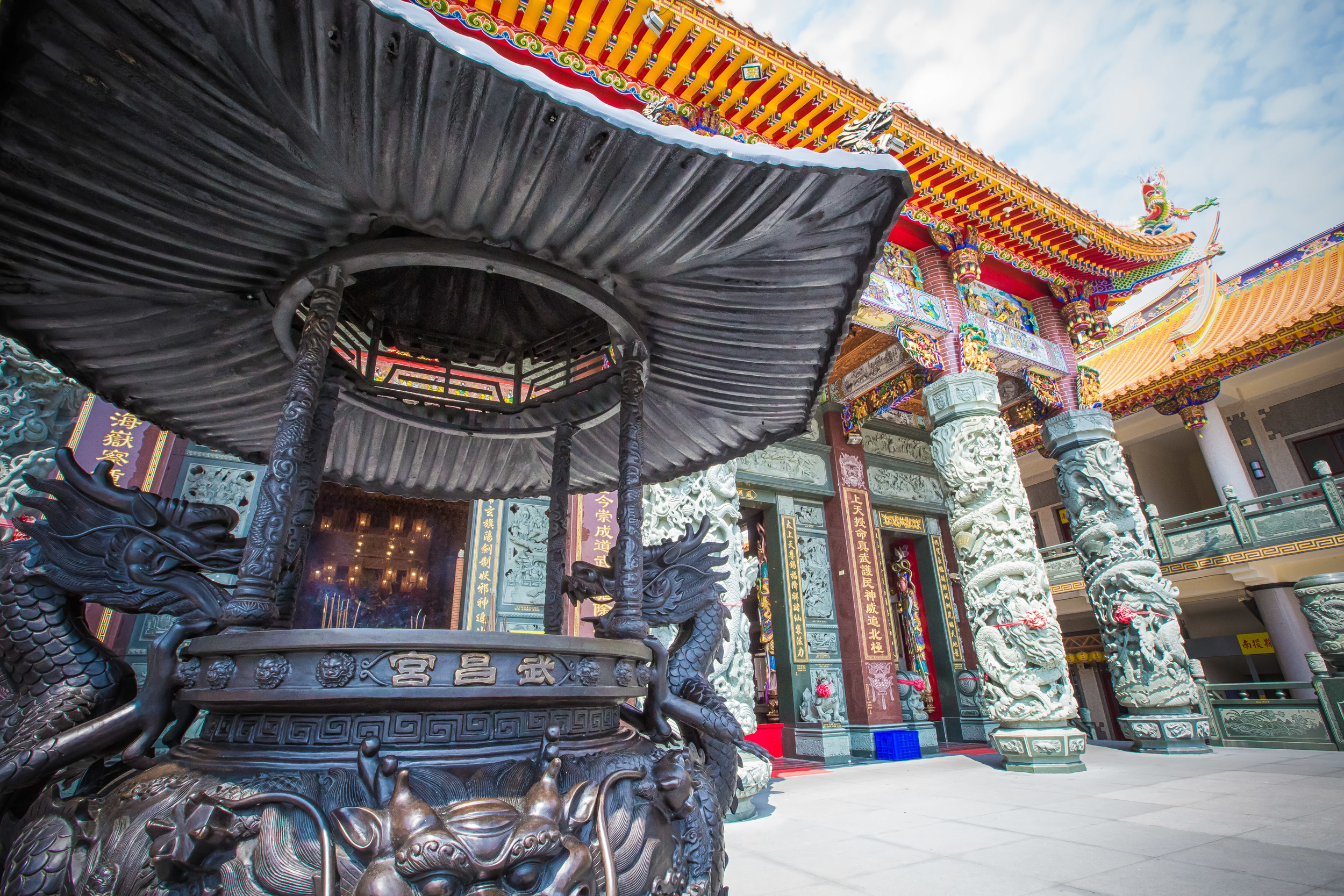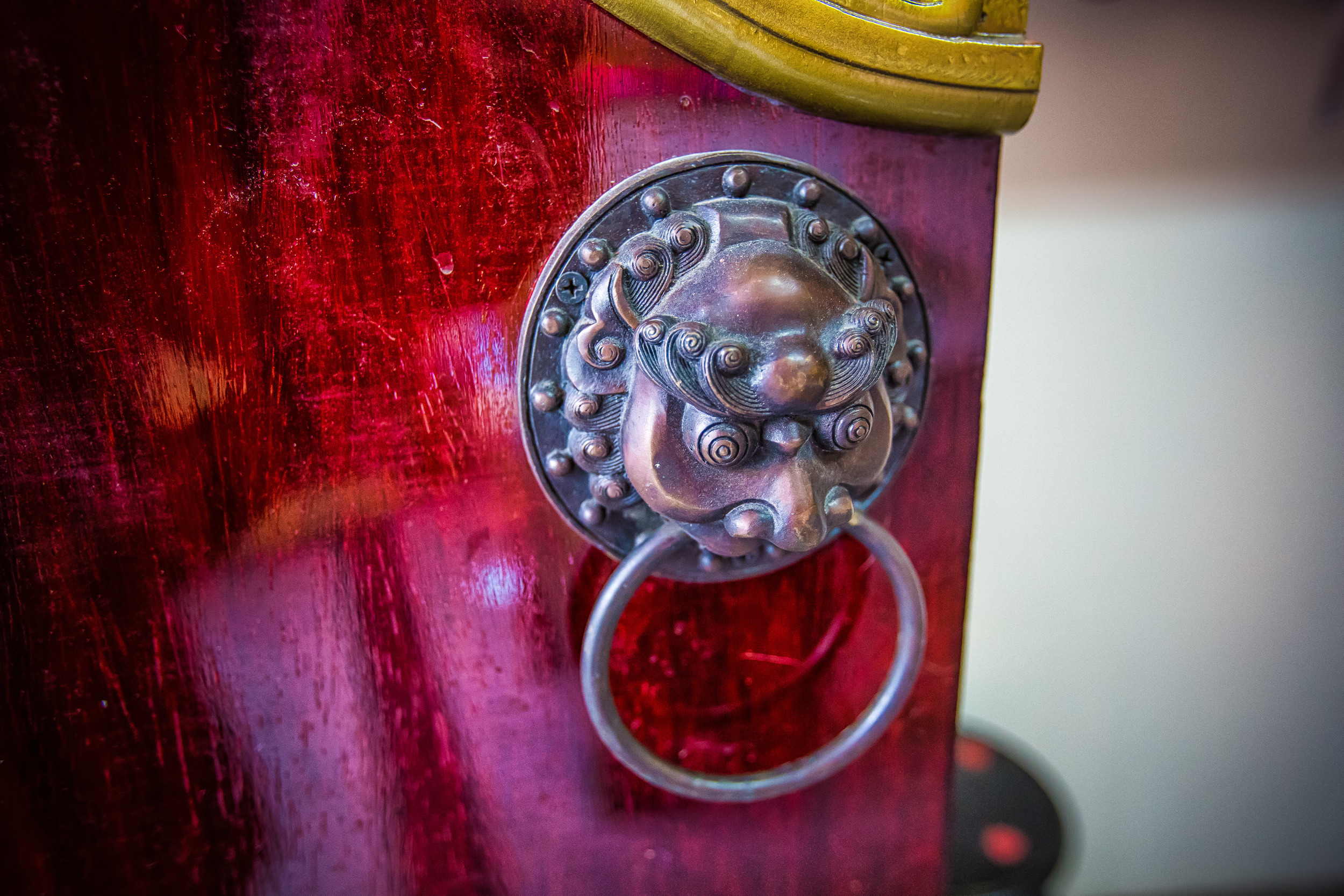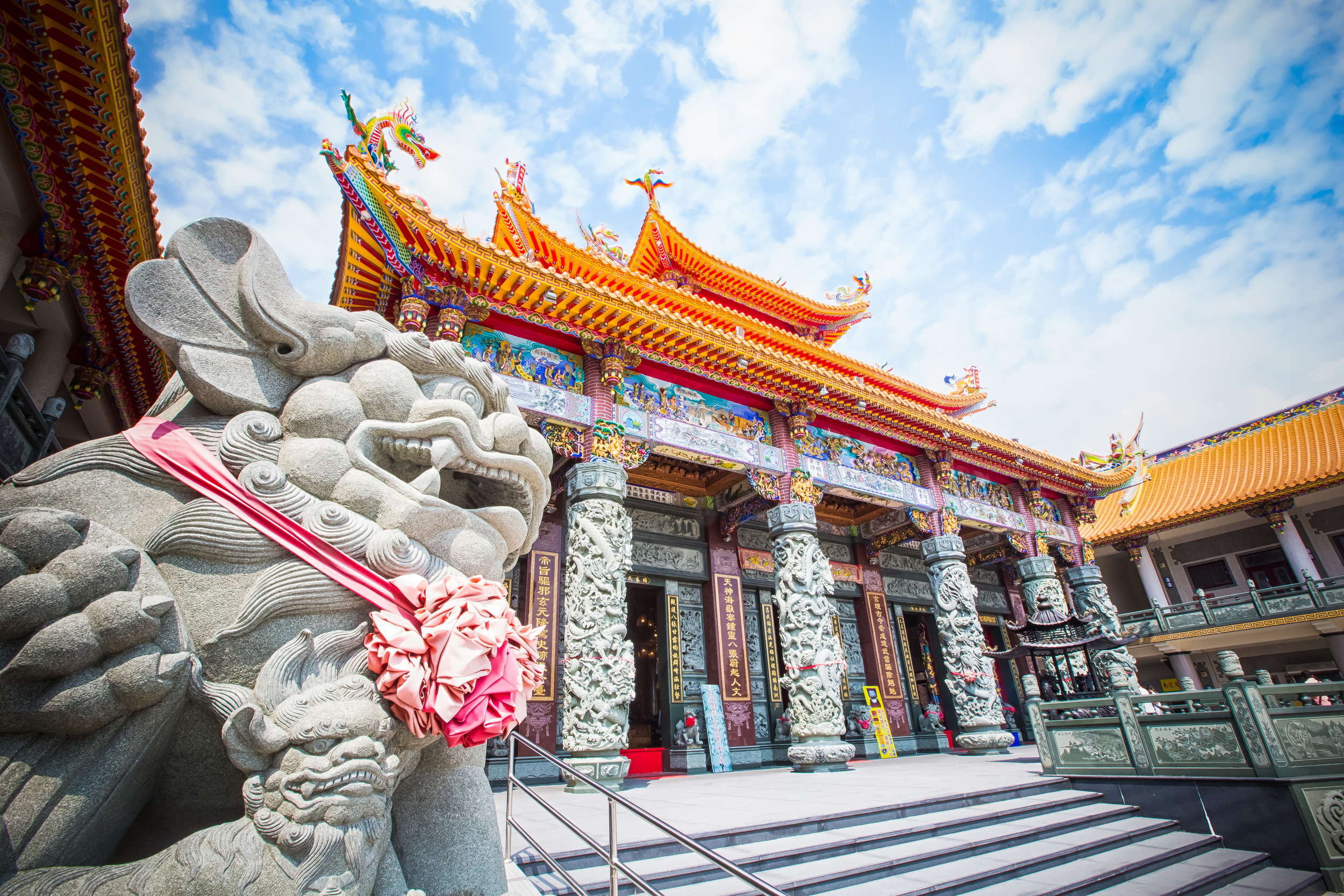Wuchang Temple (武昌宮) is another of Taiwan's famous temples, but its fame is somewhat based on the infamous nature of of its history. I will do my best to explain the history of the temple, but I think I should start out by mentioning the main reason why the temple holds a special place in the hearts of Taiwanese people.
The temple wasn’t always a household name in Taiwan, but that changed when it became one of the iconic images of the terrible terrible events of September 21st, 1999, better known as the 921 Earthquake (921大地震) or the Jiji Earthquake (集集大地震)
The earthquake, 7.3 -7.7 in magnitude struck central Taiwan killing 2415 people, injuring 11,305 and caused over 10 billion dollars worth of damage around the country. The earthquake etched itself into the consciousness of the entire country and its effects have been long-lasting. The slow response to the earthquake was also one of the deciding factors that took away the KMT’s 50 year grip on power, the first time since the Nationalists retreated to Taiwan in 1949.
The epicentre of the massive earthquake was in the small town of Jiji (集集) in Nantou county (南投縣) yet it destroyed and damaged buildings throughout the entire country. The destruction of Jiji’s Wuchang Temple however became one of the iconic images of the earthquake and what remains of it today has been preserved as a reminder to the people of Taiwan of the events of that terrible day.
The original Wuchang temple was built in 1923 and was dedicated to a Taoist deity named the Zhenwu Supreme Emperor (玄天上帝), but it is not the temple that lies in ruins today. The ruins of the temple that you see today (which has been designated as a 921 Memorial site) is relatively new. In 1990, a wealthy local person donated a 471 square meter (471坪) plot of land to the temple and a year later a newer version of the temple started construction. From the information I've seen, 70 million NT dollars (2 million US) were allocated for its construction and it took eight years to complete. If you do the math, that means that the completed temple was only about a year old before it was destroyed by the earthquake.
Normally in Taiwan, this kind of thing would be considered a really bad omen, and they probably wouldn't have built another version of the temple, but when rescue teams were sent into the ruins of the temple, they found that the statues inside the temple survived the ordeal unscathed and for some reason the beards on the statues grew.
The story of the statues reverberated around the country and donations started to pile in to make a new Wuchang temple, and a new home for these statues which were considered blessed by the gods. The statues were thus placed in protective cases and preserved for years until a new temple could be built to house them.
The old temple was left in its original state, and has become somewhat of a tourist spot for people visiting the town of Jiji, which itself has seen somewhat of a renaissance in the amount of tourism that it attracts each year. The ruins of Wuchang temple thus sit there as a stark reminder of the destructive nature of mother nature and of course to the religious that nothing is permanent and that nothing lasts forever, which are important tenets of Buddhist and Taoist beliefs.
I won't bother going into very much detail about that kind of tourism however because my friend Alexander also blogged about the temple sharing some excellent photos and also going into excellent detail about how all of this has become a sort of “disaster tourism.” I think he did such a good job describing the current situation at the temple so I won't regurgitate his points here!
They say the third time is a charm, so in April 2007, eight years after the earthquake and destruction of the second Wuchang temple, construction began on the third temple. This time they were serious and had a construction budget of one hundred million New Taiwan Dollars ($3 million US) commissioning well-known wood-work, stone-carving and painting artisans from around the country to assist in the completion of the new temple.
Construction of the new temple lasted six years and was finally opened to the public on October 12th, 2013 with three days of celebrations and traditional rituals. The new Wuchang temple is much bigger than the original with two additional buildings off to the side of the main temple with shrines and offices.
The newly completed temple sits directly in front of the ruins of the former temple and is now a memorial museum. Since the temple has become somewhat of a tourist attraction, there is an option for guided tours (Mandarin only) that will explain the destruction of the former temple and the significance of the newer one.
What strikes me most about the new temple is the craftsmanship that went into its construction. Taiwanese temples, especially Taoist temples are usually quite extravagant, but this one goes out of its way, and that is probably due to the large budget that was used to construct the temple.
The wood-work inside the main shrine room is beautiful and highly detailed. I could have just grabbed a chair and sat there looking at it for hours. The stone work on the outside of the temple and on the pillars is also highly detailed and I think the artists who contributed to the construction of the temple deserve a hand for not only their work, but their dedication to the preservation of traditional Taiwanese temple art.
If you are in the Jiji area, make sure you check out both the old temple and spend some time taking in the atmosphere and artistry of the new version and of course take some time to learn about the terrible 921 earthquake that forever changed this country.
Hopefully the third time is a charm and this time Wuchang Temple has better luck. The amount of craftsmanship and work that went into constructing this one is quite considerable!
Gallery / Flickr (High Res Photos)
